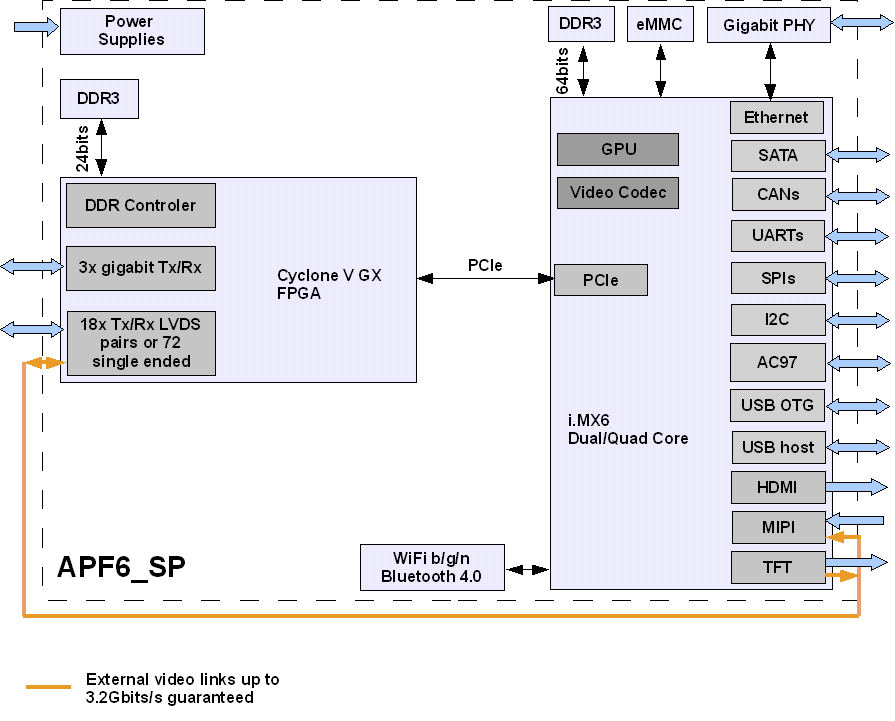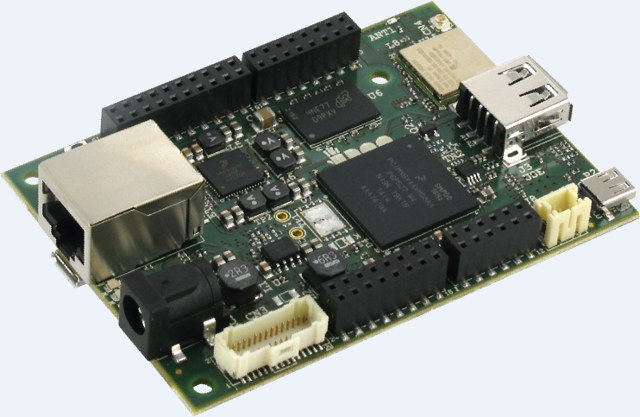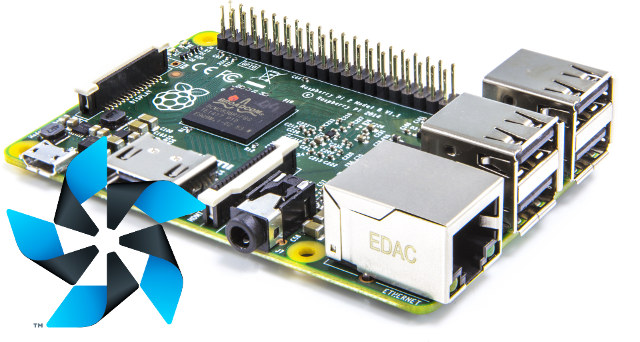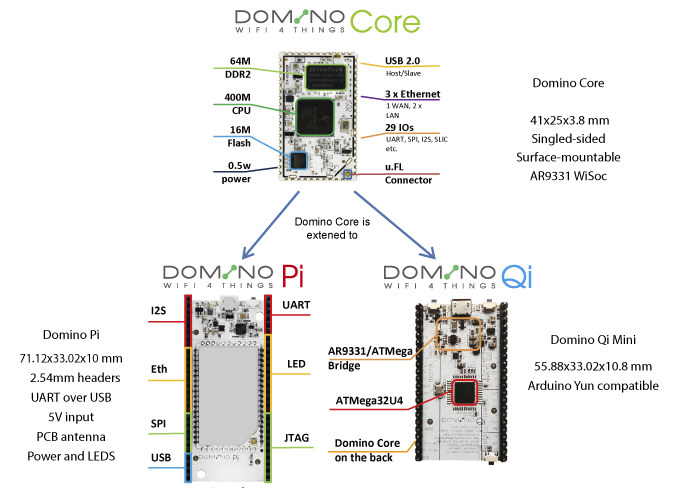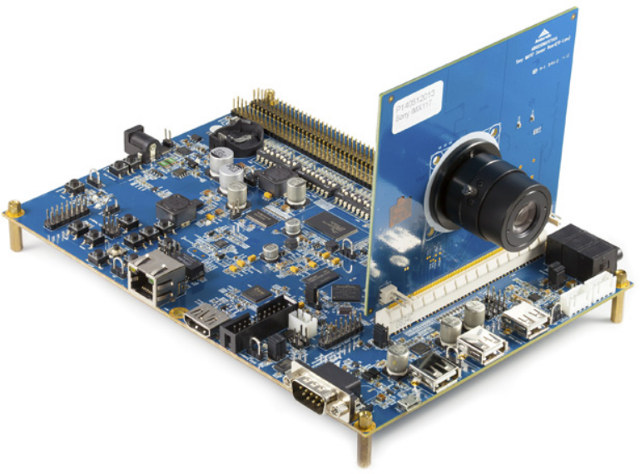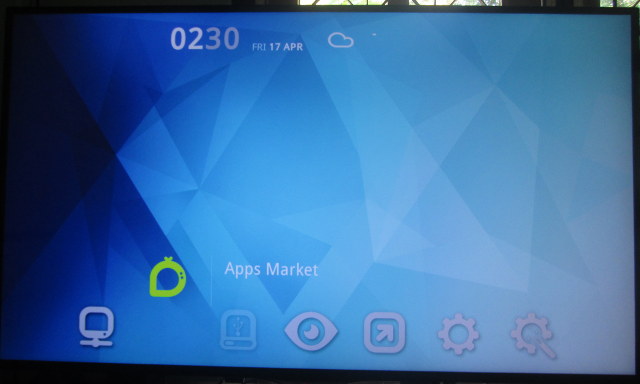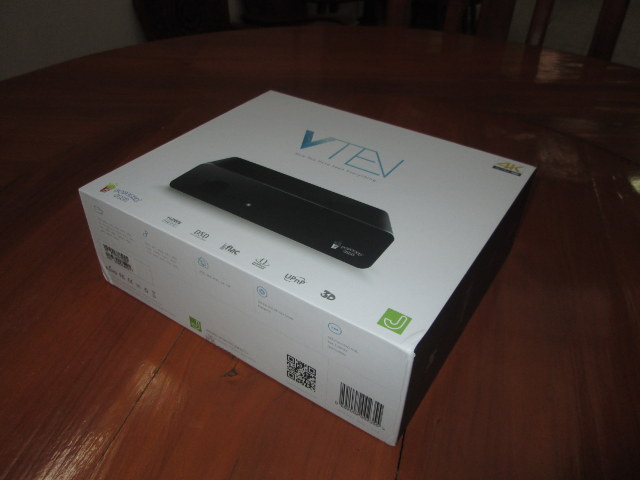Xilinx Zynq and Altera Cyclone V are both SoC families combining an ARM processor (Hard Processor System – HPS) with FPGA fabric into a single chip. But Armadeus Systems, a French company designing industrial ARM Linux processor modules, has unveiled a new module where the CPU and FPGA are two separate chips, namely Freescale i.MX6 (single to quad) and Altera Cyclone V GX FPGA, in order to provide more flexibility, and extra features like a GPU with OpenCL support, an hardware video processing unit, a dedicated SATA port, and so on. Armadeus APF6_SP SoM specifications: SoC – Freescale i.MX6 single, dual or quad core Cortex A9 processor with Vivante GPUs FPGA – Altera Cyclone V GX (C4/C5/C7/C9) System Memory 512MB to 1GB DDR3 32-bit @ 800 MHz for i.MX6 Solo or Duallite 512MB to 2GB DDR3 64-bit @ 1066MHz for i.MX6 Dual or Quad Optional up to 768MB RAM dedicated […]
UDOO Neo Combines Arduino, Raspberry Pi, Wi-Fi, Bluetooth and Sensors into a Single $49 Board (Crowdfunding)
UDOO Neo was unveiled last February as the first hobbyist board features Freecale i.MX6 Solox Cortex A9 + Cortex M4 processor. I was expecting UDOO to design support board since their earlier UDOO board combined Freescale i.MX6 processor with an Atmel MCU, and the new processor allowed for integrating the same functionality into a single chip. The board is now on Kickstarter where you can pick UDOO Neo Basic for $49 (Early bird is $35), or UDOO Neo for $59 (Early bird was $45) adding an Ethernet port, some sensors, and 1GB RAM, instead of 512 MB for the Basic version. But both versions of the board basically share the same specifications: SoC – Freescale i.MX 6SoloX ARM Cortex-A9 core @ 1GHz with 2D/3D GPU and ARM Cortex-M4 Core @ 166 MHz System Memory – 512MB (Basic) or 1GB DDR3 Storage – micro SD slot, 8-bit SDIO interface (on expansion headers) […]
Tizen OS Ported to the Raspberry Pi 2
Tizen may not be overly used in devices, but there has been ports of the operating system on various ARM platform, mostly development boards, powered by Allwinner, Rockchip, Freescale SoCs, and more… Seeing the popularity of Raspberry Pi 2 Model B, Samsung Open Source Group decided to port Tizen to the latest version of the hobbyist board. The full instructions are rather long, and provided in the link above, but the main steps – using a Linux based computer – can be summarized as follows: Create a local copy of tizen-distro Add Raspberry Pi 2 BSP Meta repository Initialize the environment and modify some config files Start the build with Yocto: bitbake rpi-hwup-image. This should make a minimal headless? image Create an SD card image with tmp-glibc/deploy/images/raspberrypi2/rpi-hwup-image-raspberrypi2.rpi-sdimg using dd, an optional resize the parition with gparted or fdisk/resize2fs. Insert the SD card in to your Raspberry Pi 2, and have […]
Domino Core Wi-Fi Module Powers an Arduino Yun Compatible Board (Crowdfunding)
The makers of GL.iNet OpenWRT compatible router have decided to build a module and two development boards based on Qualcomm Atheros AR9331 WiSoC. Domino.IO is composed of a Domino Core Wi-Fi module that can be used in your own project, but if also part of Domino Pi, a breadboard-friendly board featuring the module, and Domino Qi mini, a similar board with an Atmel ATMEga32U MCU making it compatible with Arduino Yun board. Domino Core specifications: SoC – Qualcomm Atheros AR9331 MIPS processor @ 400MHz with System Memory – 64MB DDR3 Storage – 16MB flash Connectivity – 802.11 b/g/n Wi-Fi with u.FL connector I/Os via half through holes – USB 2.0 host/slave, 3x Ethernet, 29 IOs including UART, SPI, I2S, SLIC, etc… Dimensions – 41 x 25 x 3.8 mm Domino Pi and Qi mini summarized specifications are shown in the table below. Domino Pi Domino Qi Mini Wi-Fi Module Domino […]
Pipo X8 is a Windows 8.1 Mini PC with a 7″ Touchscreen
When it first launched, Pipo X7 was a $90 mini PC running Windows 8.1 with Bing tablet version, but Microsoft did not approve since that version is reserved for products with a 7″ screen or smaller, and now Pipo X7 sells for around $120 because it includes a $25 license for Windows 8.1 with Bing NTE (for mini PC). So in their cost saving efforts, Pipo decided to add a cheap 7″ 1024×600 touch screen display to their new Pipo X8 mini PC also powered by Intel Atom Z3736F or Z3735F Pipo X8 specifications: SoC – Intel Atom Bay Trail Z3736F up to 2.16 GHz or Atom Z3735F up to 1.83Mhz with Intel HD graphics. System Memory – 2GB DDR3 Storage – 32GB or 64GB eMMC flash + micro SD slot up to 32GB Display – 7″ 1024×600 touch screen with 5-points. Video & Audio Output – HDMI up to 1080p […]
Ambarella Unveils SL2m IP Camera Reference Design Promising up to 6 Months of Battery Life
Ambarella S2Lm IP Camera SoC features a Cortex A9 CPU core, encodes video with H.264 up to 3Mp30 / 1080p30, and targets consumer and entry-level IP Camera designs. The company recently launched a new battery-powered IP camera reference design based on the solution that promises up to 6 months battery life, and can record Full HD video in less than 500ms from wake up, making ideal for battery operated security cameras. A Linux SDK is also provided with reference implementations for low-power standby operation, wake-on-Wi-Fi and fast boot to Linux. Unfortunately, that’s about all we know about the reference design, so instead I’ll have a look at the processor, and SL2m IP camera evaluation board. Ambarella SL2m SoC specifications: CPU – ARM Cortex-A9 processor with 32KB/32KB I/D and 128 KB L2 Cache, NEON and FPU, Crypto Engine – AES/3/DES/SHA-1/MD5 DSP / VPU – Ambarella Image and Video DSPs Sensor and […]
Popcorn Hour VTEN Review
Popcorn Hour VTEN a Linux based media player powered by Sigma Designs SMP8757 ARM Cortex A9 processor. Contrary to the many Android TV boxes I tested in the last few years, the device is dedicated to media playback, even though it has an App Store with 59 apps including YouTube, Facebook, and Twitter. I’ve already taken a few pictures of the device and board, so today, I’ll go through the user interface, quickly test the app store, go through my library of video test files, and check if HDMI audio pass-through is indeed working. Popcorn Hour VTEN User Interface I’ve connected VTEN to an Ethernet Gigabit switch, the HDMI port to Onkyo TX-NR636 AV receiver which itself is connected to LG 42UB820T 4K UHD TV, and the 5V/3A power supply. Pressing the On/Off switch at the back of the player will start it, and the boot takes just under one […]
Popcorn Hour VTEN 4K Linux Media Player Unboxing & Teardown
Cloud Media (aka Syabas) sent me their latest Popcorn Hour VTEN media player. It supports HDMI output up to 4K, H.265 video codec, and features an eSATA connector, as well as optical and coaxial S/PDIF connectors. Today, I’ll show some pictures of the kit, and teardown the box to checkout the hardware, and in a few days, I’ll report on the user interface, video playback, and HDMI audio pass-through capabilities. Popcorm Hour VTEN Unboxing The unexpected device was sent via Fedex in the package shown below. It lists some of the key features such as H.265, DSD (Direct Stream Digital), FLAC, Matroska, UPnP, 3D, and 4K Ultra HD support, as well as the specs, and more features and package content in English, French, Italian, Spanish, German, Dutch, Swedish, and Danish. The box comes with an IR remote control and two AAA batteries, an HDMI cable, a SATA cable, a 5V/3A […]


